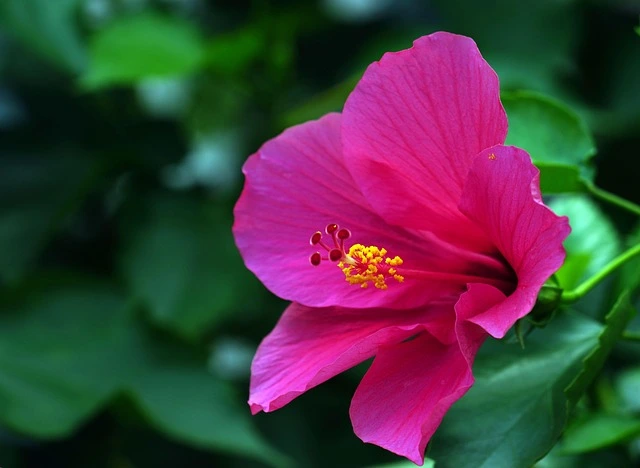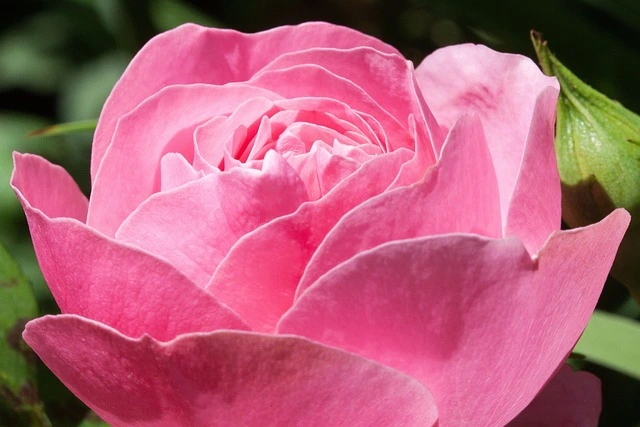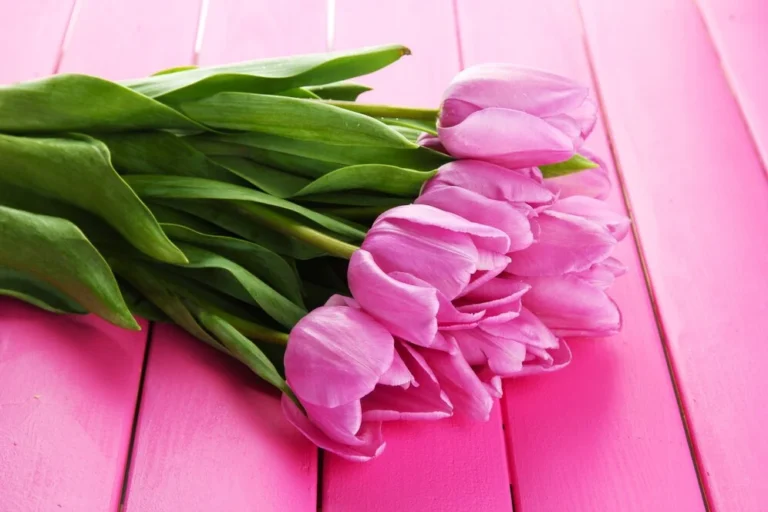Pink Hibiscus Flower: 7 Stunning Ways to Grow It at Home
Table of Contents
The pink hibiscus flower stands out as one of the most captivating additions to any garden or indoor space. With its delicate petals, vibrant hue, and tropical charm, this flowering plant has become increasingly popular among both novice and experienced gardeners. In this comprehensive guide, I’ll share seven proven methods to successfully grow pink hibiscus flowers at home, ensuring you enjoy magnificent blooms year after year.
What Makes Pink Hibiscus Special?
The pink hibiscus (Hibiscus rosa-sinensis) is more than just a pretty face in the botanical world. This stunning tropical flower comes in various shades of pink, from soft blush to vibrant magenta, creating a focal point wherever it grows. Beyond its aesthetic appeal, pink hibiscus plants offer several notable benefits:
- Extended blooming period: With proper care, pink hibiscus can flower for many months
- Versatility: Thrives in gardens, containers, and even as indoor plants
- Medicinal properties: Used in traditional remedies for various ailments
- Butterfly and hummingbird attraction: Natural pollinators love these blooms
Native to tropical and subtropical regions, pink hibiscus flowers have become adaptable to various climates, making them accessible to gardeners worldwide. Their trumpet-shaped blooms, often measuring 4-6 inches across, create a dramatic display against the plant’s glossy, dark green foliage.
7 Expert Methods for Growing Stunning Pink Hibiscus
1. Selecting the Perfect Location
The foundation of successful pink hibiscus growth begins with proper placement. These sun-loving plants require specific conditions to thrive:
Sunlight Requirements: Pink hibiscus flowers need at least 6-8 hours of direct sunlight daily. Without adequate light, they’ll produce fewer blooms and develop leggy growth.
Temperature Considerations: These tropical beauties prefer temperatures between 60-90°F (15-32°C). They’re particularly sensitive to frost and cold temperatures.
“The right location provides 80% of your pink hibiscus’s success. Get this right, and you’re well on your way to magnificent blooms.” – Experienced hibiscus grower
Indoor Placement: If growing indoors, choose a south-facing window that receives abundant light. Supplement with grow lights during darker winter months if necessary.
2. Soil Preparation and Planting Techniques
The pink hibiscus flower thrives in well-draining, nutrient-rich soil with specific characteristics:
Ideal Soil Composition:
- Slightly acidic to neutral pH (6.0-7.0)
- Rich in organic matter
- Well-draining to prevent root rot
Planting Process:
- Dig a hole twice the width of the root ball
- Mix compost or aged manure into your garden soil
- Place the plant at the same depth it was in its container
- Backfill with soil mixture and water thoroughly
For container growing, choose a pot that’s 2-3 times larger than the root ball with adequate drainage holes. Use a premium potting mix designed for flowering plants, ideally with slow-release fertilizer incorporated.
3. Watering Strategies for Optimal Growth
Proper watering is crucial for pink hibiscus plants. These flowering beauties require consistent moisture without becoming waterlogged:
Watering Schedule:
- During active growth: Water when the top inch of soil feels dry
- Winter months: Reduce watering frequency
- Hot periods: Increase watering as needed
Watering Tips:
- Water deeply at the base of the plant to encourage deep root growth
- Avoid overhead watering which can lead to fungal issues
- Apply mulch to retain soil moisture and regulate temperature
Consistency is key – pink hibiscus flowers respond best to regular watering patterns rather than feast-or-famine approaches.
4. Fertilization for Abundant Pink Blooms
Pink hibiscus plants are heavy feeders that require regular nutrition to produce their spectacular blooms:
Fertilizer Types and Timing:
| Season | Fertilizer Type | Application Frequency |
|---|---|---|
| Spring | Balanced (10-10-10) | Every 2-3 weeks |
| Summer | Bloom-booster (e.g., 10-30-10) | Every 2-3 weeks |
| Fall | Low-nitrogen formula | Monthly |
| Winter | None (dormancy period) | None |
For container-grown pink hibiscus, consider using a water-soluble fertilizer at half-strength with every other watering during the growing season.
Organic Alternatives:
- Compost tea applied monthly
- Fish emulsion for quick nutrient boost
- Worm castings worked into the soil
5. Pruning and Maintenance for Healthier Plants
Regular pruning keeps pink hibiscus flowers healthy, shapely, and blooming profusely:
When to Prune:
- Light pruning: Year-round to remove dead or damaged growth
- Hard pruning: Late winter/early spring before new growth emerges
Pruning Techniques:
- Remove dead or crossing branches
- Pinch back growing tips to encourage bushiness
- Cut branches at 45-degree angles just above outward-facing buds
- Remove spent flowers promptly to encourage more blooms
Additional Maintenance:
- Inspect regularly for pests and diseases
- Clean pruning tools with alcohol between cuts
- Apply mulch around the base to suppress weeds and maintain moisture

6. Protection Against Common Pests and Diseases
Pink hibiscus flowers can face several challenges from pests and diseases:
Common Pests:
- Aphids
- Spider mites
- Whiteflies
- Hibiscus sawfly
Prevention and Treatment:
- Regularly inspect leaves (especially undersides)
- Use insecticidal soap or neem oil for organic control
- Introduce beneficial insects like ladybugs
- Maintain good air circulation around plants
Disease Management:
- Prevent fungal issues by avoiding overhead watering
- Remove and destroy infected plant parts
- Apply appropriate fungicides when necessary
- Ensure proper spacing between plants
7. Seasonal Care and Overwintering
Pink hibiscus flowers require special attention as seasons change:
Summer Care:
- Increase watering during hot periods
- Provide afternoon shade in extremely hot climates
- Continue regular fertilization
- Monitor for increased pest activity
Winter Protection:
- Bring container plants indoors before temperatures drop below 50°F (10°C)
- Reduce watering and stop fertilizing
- Place in bright location away from cold drafts
- Consider a humidifier for indoor plants
Spring Transition:
- Gradually reintroduce outdoor plants to sunlight
- Resume regular watering and feeding schedules
- Apply fresh mulch around garden plants
- Inspect for any winter damage and prune as needed

Common Mistakes to Avoid When Growing Pink Hibiscus
Despite their beauty, pink hibiscus flowers can be somewhat finicky. Here are some common pitfalls to avoid:
- Overwatering: The number one killer of hibiscus plants
- Improper fertilization: Too much nitrogen produces lush leaves but few flowers
- Insufficient light: Results in poor flowering and weak growth
- Ignoring early pest signs: Small problems quickly become major infestations
- Harsh pruning at the wrong time: Can reduce or eliminate flowering for the season
Conclusion
Growing pink hibiscus flowers successfully requires attention to detail and proper care, but the spectacular results are well worth the effort. By following these seven proven methods—selecting the right location, preparing proper soil, watering correctly, fertilizing appropriately, pruning regularly, preventing pest issues, and providing seasonal care—you’ll be rewarded with magnificent pink blooms that transform your garden or home.
Whether you’re a seasoned gardener or just starting your plant journey, pink hibiscus offers an accessible yet rewarding growing experience. Their striking flowers, lush foliage, and tropical presence create a statement wherever they grow. With the guidance provided in this article, you’re now equipped to grow these stunning pink beauties with confidence and success.
What aspect of growing pink hibiscus flowers are you most excited to try? Share your experiences or questions about these magnificent blooms in the comments below!
Share Your Opinion,Did You Find The Article Helpful ?
There are no reviews yet. Be the first one to write one.


